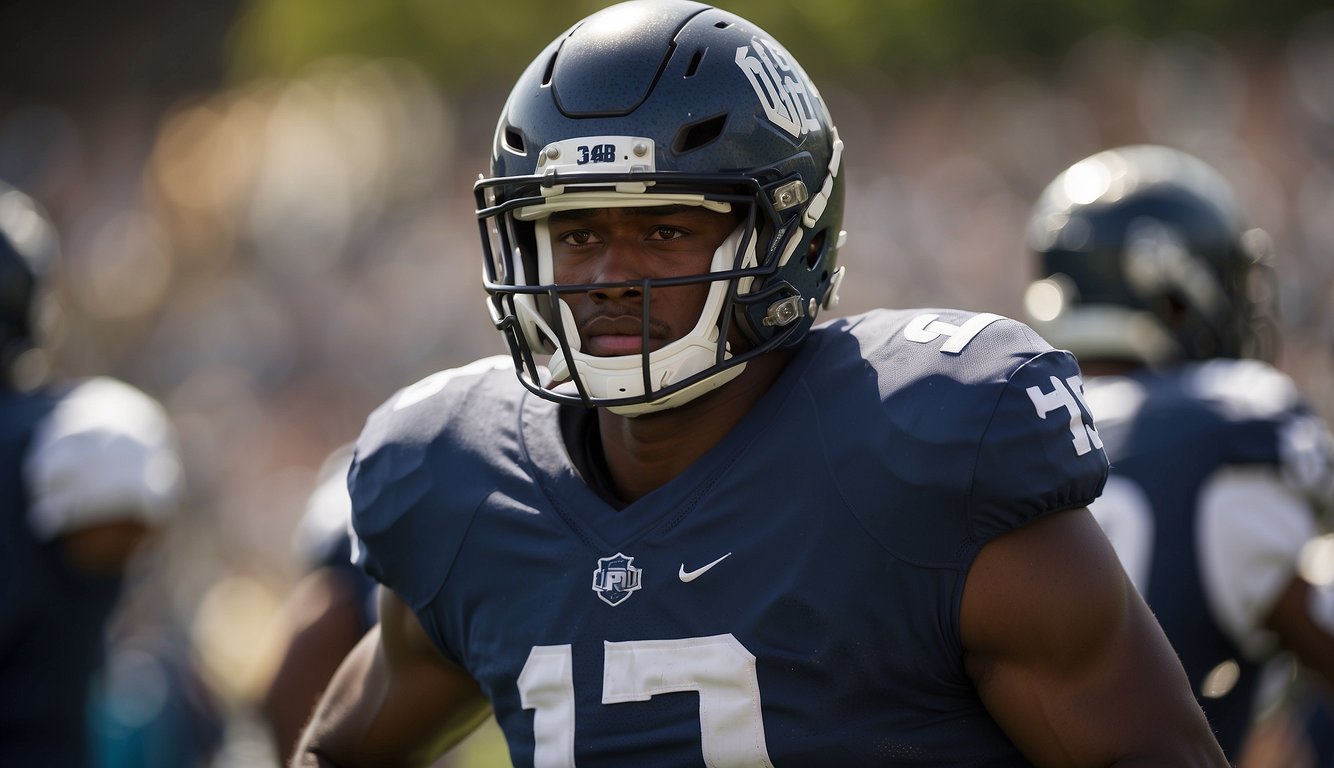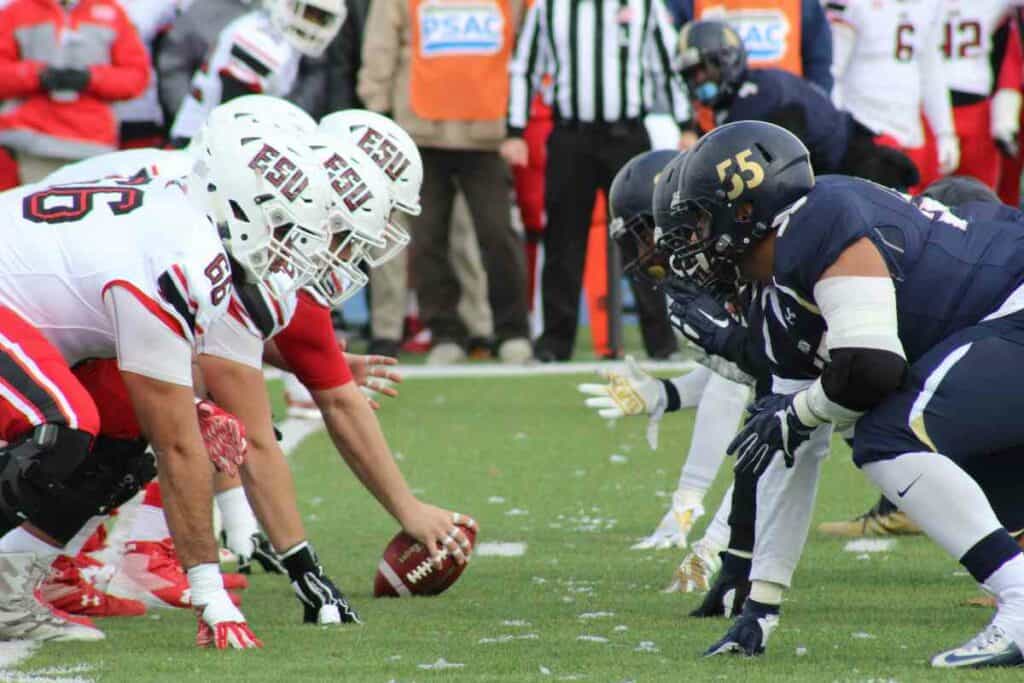When Can a College Football Player Declare for the Draft?
For aspiring NFL stars, the transition from college football to the professional ranks is a monumental step, laden with both opportunity and careful consideration.

Related Post! How Many College Football Players Make It To The NFL?
When Can a College Football Player Declare for the Draft?
A college football player can declare for the NFL Draft three years after their high school class graduates, typically after their junior year or redshirt sophomore year. They must declare by a January deadline to forego remaining NCAA eligibility and pursue a professional career.
Typically, athletes become draft-eligible three years after their high school class’s graduation, often coinciding with their junior year or, for redshirt players, after their sophomore year.
This critical juncture requires athletes to meticulously evaluate their position, considering factors such as their potential draft standing and the broader implications for their academic and athletic pursuits. With a January deadline to declare their draft intentions, the decision to step forward into the NFL Draft landscape is both definitive and transformative, effectively concluding their NCAA football journey.
Essential Insights:
- Eligibility for the NFL Draft traditionally arrives three years following high school graduation.
- The decision to declare is pivotal, necessitating a balance between career aspirations and educational commitments.
- Opting into the draft signifies a significant career transition, relinquishing any remaining NCAA eligibility.
Navigating Eligibility Nuances

Delving into the specifics of draft eligibility unveils a structured pathway designed to ensure athletes are primed for the professional arena. At the core, the eligibility criteria hinge on a three-year buffer post-high school, allowing players to develop both physically and strategically within the collegiate framework.
Moreover, athletes who have maximized their college football eligibility or have graduated are naturally positioned to enter the draft. For those still navigating their college journey, a critical five-year mark from initial college enrollment becomes relevant for draft consideration.
Eligibility Blueprint:
- Underclassmen Ambitions: Early entrants must seek and secure NFL approval to join the draft fray ahead of schedule.
- Graduate Gateway: Graduation marks an automatic transition point to draft eligibility.
- Five-Year Perspective: Players are draft-ready if five years have elapsed since their college inception, offering a broader window for entry.
This eligibility architecture not only safeguards the athletes’ developmental trajectory but also underpins the significant leap from collegiate competition to the professional echelons. Understanding these parameters illuminates the journey of countless football players as they chase the pinnacle of their athletic dreams in the NFL.
Related Post! Do Practice Squad Players Get Super Bowl Rings?
Declaration Process
For college football players eyeing the professional horizon, navigating the NFL Draft declaration process is a critical phase in their athletic journey. This period is marked by pivotal deadlines that shape their path to potentially joining the ranks of the NFL.

Critical Deadlines:
- Soft Deadline: By January 5, athletes can “test the waters,” seeking preliminary feedback on their draft prospects without fully committing.
- Final Deadline: January 15 stands as the definitive cutoff, by which players must finalize their decision, including the potential engagement of an agent, thus concluding their collegiate football tenure.
This window between the soft and final deadlines offers a glimpse into potential draft positioning, allowing athletes to make informed decisions about their future.
Stepping into the Pros:
To officially throw their hat into the ring for the draft, players must meet specific submission deadlines, such as the February 2 deadline for the 2024 Draft. Declaring for the draft signifies:
- End of NCAA Eligibility: A conclusive farewell to college football.
- Engagement with an Agent: Securing professional guidance for the intricate pre-draft process.
This transition, filled with critical choices, marks the beginning of a dream to compete at the highest level of football.
Related Post! NCAA Vs. NFL: Is College Or Professional Football Bigger?
Navigating the Draft Pathway
The journey from college fields to the NFL Draft spotlight is framed by essential milestones that aspiring players and fans alike should note.

Key Milestones:
- Declaration Day: A mid-January deadline (January 15 for the 2024 Draft) requires underclassmen to officially declare for the draft.
- Showcase Opportunities: Post-declaration, events like the Senior Bowl on February 3 offer a platform to highlight player skills.
- NFL Scouting Combine: Scheduled from February 27 to March 4 in 2024, this event is crucial for athletes to demonstrate their capabilities.
- The NFL Draft: The culmination of this journey, the draft takes place on April 25, 2024, where new talent is welcomed into the league.
Draft Timeline Overview:
- Declaration Day: January 15
- Senior Bowl: February 3
- Scouting Combine: February 27 – March 4
- NFL Draft: April 25
Adhering to this structured timeline, athletes transition from collegiate stars to potential NFL rookies, a transformative journey underscored by strategic decisions, rigorous evaluations, and the unyielding pursuit of professional football aspirations.
Impact of Redshirt Years
In the realm of college football, understanding the concept of redshirt years is crucial, especially for players eyeing the NFL Draft. A redshirt year offers players a strategic pause in their college football career, preserving a year of eligibility while they focus on recovery, skill development, or academic adaptation without participating in competitive games.

Strategic Benefits of Redshirting:
- Injury Recovery: Provides time to heal without losing a year of play.
- Skill Enhancement: Offers an opportunity to hone skills and adapt to the collegiate level.
- Academic Focus: Allows players to better balance the demands of sports and studies.
This tactical approach ensures that players do not deplete one of their four years of NCAA eligibility, thereby influencing their timeline for draft declaration.
Navigating Redshirt Regulations:
- Initial Year: The freshman year can serve as a redshirt season, preserving four years of eligibility for competition.
- Extended Timeline: Players then have a five-year window to utilize their four years of eligibility, offering flexibility in their college football journey.
For draft eligibility, players who have completed their redshirt year plus at least three years since high school graduation can declare for the NFL Draft. This additional development time can be pivotal in enhancing a player’s draft prospects by allowing them to mature physically and mentally.
Eligibility Criteria Post-Redshirt:
- Redshirt Sophomore: Eligible after two active playing seasons post-redshirt year.
- Redshirt Junior: Eligible after three active playing seasons.
- Redshirt Senior: Eligible upon exhausting or completing their eligibility.
Leveraging a redshirt year can be a game-changer for players aiming to maximize their collegiate experience and elevate their standing before transitioning to the professional stage.
Related Post! NCAA Vs. NFL: Is College Or Professional Football Bigger?
Leveraging Advisory Insights for Draft Decisions
As players contemplate the leap to the NFL, consulting the College Advisory Committee (CAC) becomes a pivotal step. This expert panel, comprising seasoned scouts and team executives, offers invaluable insights into an athlete’s prospective draft position.

Navigating the Advisory Process:
- Eligibility for Evaluation: This opportunity is exclusive to underclassmen contemplating early draft entry.
- Optimal Timing: Post-regular season is the ideal window for requesting a CAC evaluation, providing clarity for draft decisions.
Key Deadlines and Processes:
- Evaluation Request Window: Following the regular season, players can initiate their request for a draft evaluation.
- Critical Deadline: January 5 marks the final date for submitting evaluation requests, ensuring timely advice ahead of the draft declaration deadline.
The CAC’s assessments, particularly regarding first or second-round potential, are highly regarded for their accuracy and can significantly influence a player’s decision-making process regarding the draft. Accessing this expert evaluation can be a crucial factor in determining whether to make the transition to the NFL or to continue developing at the collegiate level.
For those on the brink of deciding their professional future, engaging with the CAC by the set deadlines can illuminate the path forward, offering a clearer vision of their potential draft standing and guiding their next steps toward achieving NFL aspirations.
FAQs
What is the eligibility requirement for college football players to declare for the NFL Draft?
Players must be three years removed from high school graduation to be eligible for the draft.
Can a redshirt sophomore declare for the NFL Draft?
Yes, redshirt sophomores can declare for the draft if they are three years past high school graduation.
Is there a deadline for college football players to declare for the NFL Draft?
Yes, there is a January deadline for players to declare their intentions to enter the draft.
What happens if a player declares for the draft?
Once a player declares, they forfeit any remaining college football eligibility and can’t return to play NCAA football.
Can players withdraw their declaration for the NFL Draft?
Players can withdraw their declaration by a specific deadline, but rules and deadlines can vary, so it’s essential to check the current year’s regulations.
